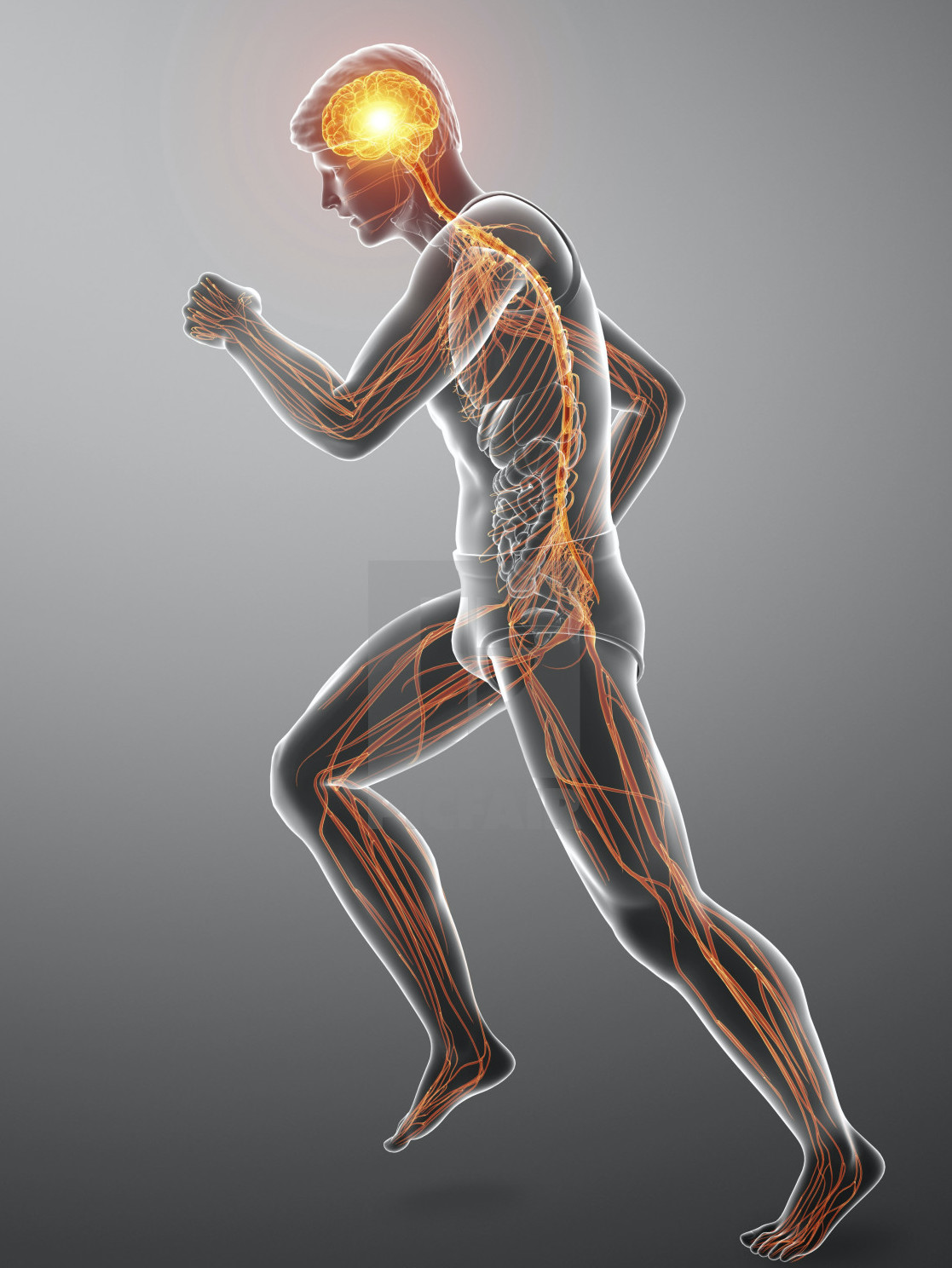


By Caitlin Alexander, PT, DPT, CAFS
One of the most challenging aspects of my job as a sports physical therapist is determining what tissue in the body is the source of a patient’s pain. There are a variety of types of tissue sources of pain and sometimes an injury can cause multiple. Because all muscles, tendons and soft tissues in our body are innervated by nerves, a foot problem could very well be manifesting from a nerve-related problem else where in the body. Nerves run from head to toe so any kink or sensitivity long that nerve route can potentially cause pain (think kinks in a long hose).
Nerve-related pain is a lot more common than most practitioners realize, especially in the athletic population. Probably 20% of injuries I treat in runners, cyclists and triathletes are actually nerve related pains that present as a muscle, tendon or other soft tissue injury.
What is nerve pain?
Nerve (or neurogenic) pain can occur any time a nerve is sensitized. This sensitization can happen at any point along a nerve’s trajectory - from the point where it exits the spinal cord in the spine, and along the the nerve’s route to any of our limbs. Once a nerve is irritated, it can be very sensitive to stretch, compression and even chemical changes (hormones, inflammation from another local tissue) in the body.
Nerve pain can be peripheral (an irritation to the nerve along its route as it goes throughout the body’s limbs), or central (originating from the spine). Central pain can often refer peripherally to various parts of the arms or legs and mimic other orthopedic or musculoskeletal injuries.
So how do you know if your pain is nerve-related pain? Nerve pain can be tricky to diagnose but there are few patterns that are worth pointing out:
1. Your Pain Doesn’t Respond to Traditional Treatment - if a patient comes into my clinic with an injury that failed to resolve with other PT, I always look at the spine or for neurogenic symptoms. If you’re treating a distal injury and it is not responding, always look up the chain! I had a patient come in with lower leg pain that wouldn’t resolve with previous massage, dry needling, or soft tissue work. I looked further up into her hip and low back and found that her pain was actually referral pain along the sciatic and common fibular nerves.
Traditional treatments for musculoskeletal injuries - soft tissue work, stretching, strengthening, dry needling - usually fail to resolve nerve pain if you are being treated peripherally. There is no injured tissue there. Aggressive foam rolling and stretching can also make an irritated nerve more unhappy.
2. Your Pain is Dull, Diffuse, Hard to Pinpoint, or Moves Around - a soft tissue injury like a muscle strain or tendinopathy is usually pretty easy to pin down. Location and pattern of pain are fairly consistent and localized. Nerve pain can be elusive and difficult to pinpoint where it hurts. And palpating the tissue often does not result in that familiar pain (or any pain at all). If you feel pain in a certain area but touching that tissue does not result in that same pain, it’s likely what you are feeling is referred pain - pain referred to that area from a location further away. Nerve pain can be dull, achy, diffuse, sharp, shooting or accompanied by pins and needles.
3. Your Pain is Variable and Doesn’t Relate to Activity Level - when patients come in with nerve-related pain, it is difficult for them to find a pattern of pain. It’s not predictable or consistent with their activity level. Sometimes they have pain from the first step of running, sometimes they don’t. Sometimes it gets better throughout a run, sometimes worse. They might also have pain just sitting on the couch. Sometimes the pain moves from one part of the body to another, anywhere along that nerve’s distribution.
4. You Have Pain at Rest - this is an important one. Random jolts of pain just sitting on the couch or lying down in bed can signal nerve or referred pain. If the nerve pain is a result of nerve entrapment or compression elsewhere, rest will not make it better. Unless you have an acute orthopedic injury, having symptoms at rest can be a red flag for nerve pain.
5. You Get No Answers From Diagnostic Imaging - nerve pain or an irritated nerve does not present itself on MRI or Xray. When a patient doesn’t respond to traditional PT, imaging is often the next route. So it can be disappointing when an MRI or Xray shows no pathology at all. An even more serious consequence is when the imaging shows pathology that isn’t necessarily related to that patient’s pain. I see this WAY too often and it can be even more psychologically damaging.
So how do you treat nerve pain?
Remember that water hose analogy above? When considering where to best target your treatment efforts, you need to consider the length of the nerve at play and where is runs. For healthy nerve conduction, the entire length should be uninterrupted and uninhibited. Gentle manual work can help to address any “sticky” areas along the nerve course, including where it originates in the spine.
Sensitized nerves also respond best to gentle mobility to promote blood flow to the tissues. Functional dry needling with electrical stimulation can also be a fantastic tool for nerve and referred pain, as it can really target the release of tissues impeding the nerves, as well as provide signal input and stimulation to help the nerves properly fire
So whether you’re a runner, a cyclist or a triathlete, be cognizant of the importance of the nervous system and the role it can play in your pain or injury. If you’re struggling with pain, make an appointment to see a physical therapist today!

0

0
Comments :